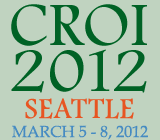 Two doses of Zostavax, a vaccine against shingles (herpes zoster), administered six weeks apart is “generally safe” for people living with HIV with CD4 counts of 200 or higher and undetectable viral loads, according to study results shared Wednesday, March 7, at the 19th Conference on Retroviruses and Opportunistic Infections (CROI).
Two doses of Zostavax, a vaccine against shingles (herpes zoster), administered six weeks apart is “generally safe” for people living with HIV with CD4 counts of 200 or higher and undetectable viral loads, according to study results shared Wednesday, March 7, at the 19th Conference on Retroviruses and Opportunistic Infections (CROI).
Though the study was not conducted long enough to determine whether the Zostavax doses actually reduced the risk of painful shingles outbreaks compared with those who received placebo, lead presenter Constance Benson, MD, of the University of California at San Diego, reported that protective herpes zoster antibodies were significantly higher among those who were vaccinated in the trial.
Interest in Zostavax, approved by the U.S. Food and Drug Administration in 2006, has been high among people living with HIV. According to Benson, both the incidence and severity of shingles and post-herpetic neuralgia—severe nerve pain following a shingles outbreak—are increased in people living with HIV, particularly those with immune suppression or immune-reconstitution inflammatory syndrome (IRIS) that can occur when antiretroviral (ARV) therapy is started when the CD4 cell count is very low.
Though antiviral therapy, such as acyclovir, can help control symptoms if started in the early stages of a shingles outbreak, it won’t necessarily prevent symptoms entirely, especially in those with HIV-related immune suppression.
Merck’s Zostavax has proved effective, reducing the incidence and severity of shingles by more than 51 percent and 61 percent, respectively, and post-herpetic neuralgia by 66 percent in HIV-negative adults 60 and older. Because it is a live, attenuated vaccine, however, there has been some concern about using it in people living with HIV, specifically that it will actually cause shingles symptoms in the absence of a functional immune system.
Benson and her colleagues with the federally funded AIDS Clinical Trials Group (ACTG) hypothesized that two doses of Zostavax will be well tolerated in people living with HIV, provided that their immune function is conserved—defined as a CD4 count of at least 200 cells—and they have undetectable viral loads while on ARV therapy. And while the researchers were not prepared to conduct a study in size and length necessary to determine whether the risk of shingles was reduced after receiving two doses of the vaccine, they were able to measure varicella zoster virus (VZV) antibody titers , or concentrations, both six and 12 weeks following the injections, as markers of protection.
The clinical trial enrolled 395 volunteers—192 of whom had CD4 counts between 200 and 349, and 203 of whom had CD4 counts of 350 or higher. Eighty-four percent were male, 47 percent were white, the average age was 49, and 66 percent had no prior shingles outbreak.
The researchers noted that Zostavax would be considered safe in the study if no more than 18 (6.1 percent) people receiving the vaccine met the pre-defined “endpoint” of the study—a severe side effect, as defined by two sets of criteria (one by the International Conference on Harmonisation and another by the National Institutes of Allergy and Infectious Diseases’ Division of AIDS).
According to Benson, 17 (5.1 percent) of the 295 patients in the Zostavax groups met the pre-defined endpoint, compared with two (2.1 percent) of the 97 patients in the placebo group. This difference was not statistically significant, meaning it could have occurred by chance. Rates of injection-site reactions were, however, significantly more likely to occur among those receiving Zostavax compared with placebo: 42 percent vs. 12.4 percent, respectively.
Rash and fever were documented in roughly 5 percent of all study volunteers, irrespective of whether they were in the Zostavax group or placebo group.
VZV antibody titers doubled in the Zostavax group, compared with the placebo group, at weeks six and 12 in the study. The observed differences between the two groups and both time points were statistically significant.
Benson also noted that antibody titers were significantly higher, compared with placebo, in both CD4 cell count groups, though she explained that antibody levels were highest among those in the high CD4 cell group compared with the low CD4 cell group.
“Administration of two doses of [Zostavax] in HIV-positive adults with CD4 counts of 200 cells or greater and virologic suppression on ARV therapy was generally safe, and preliminary data also suggest it was immunogenic,” Benson concluded.






1 Comment
1 Comment